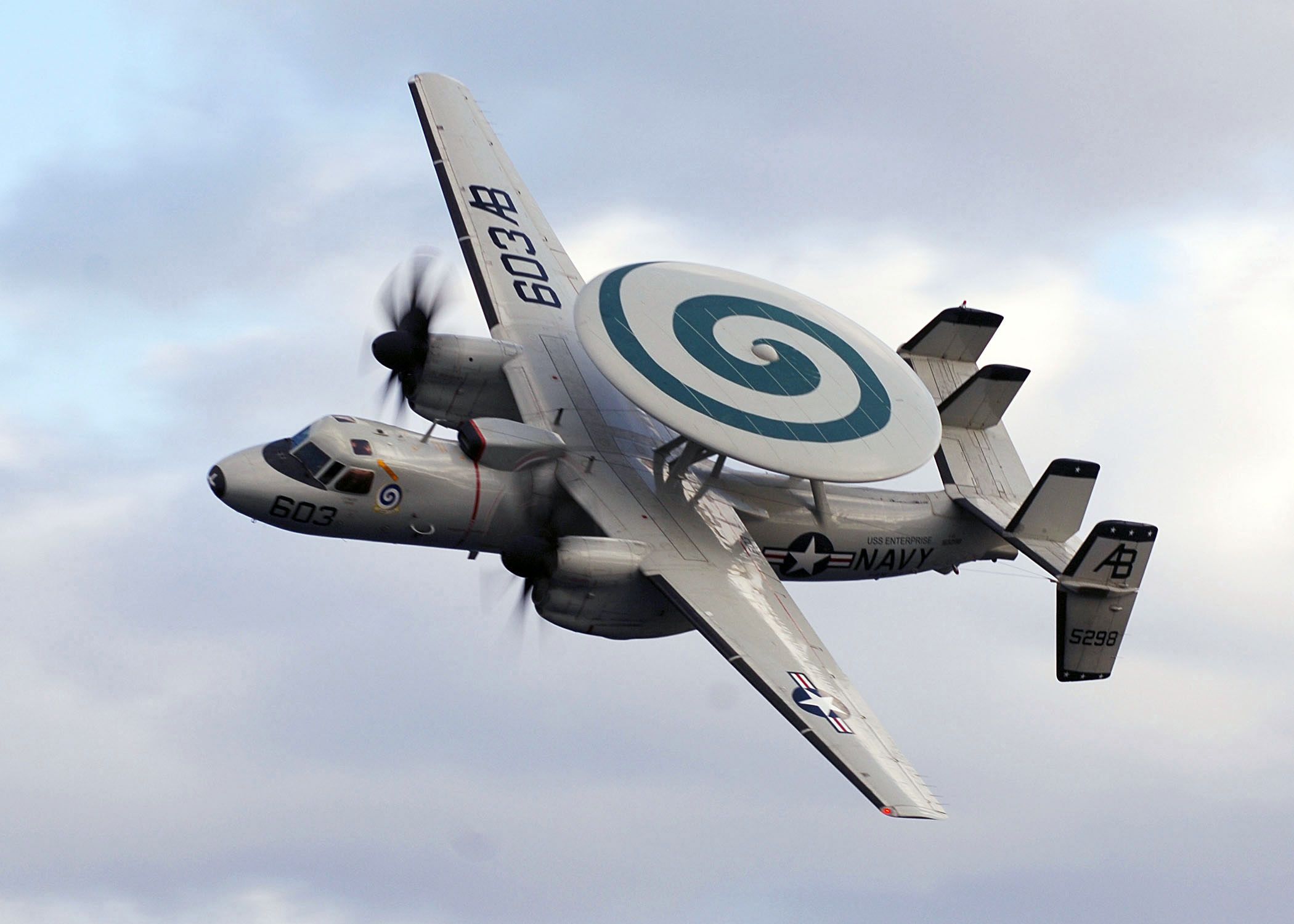
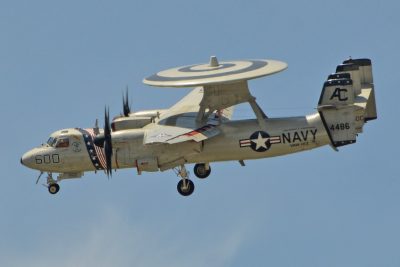
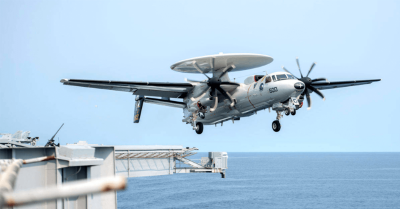
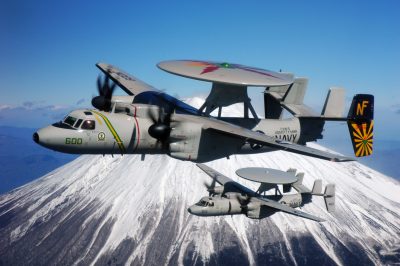
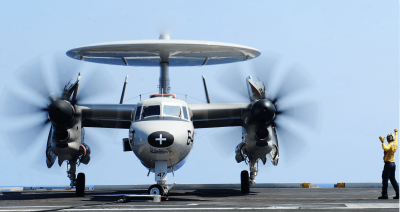
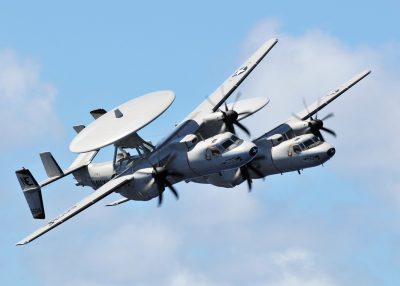
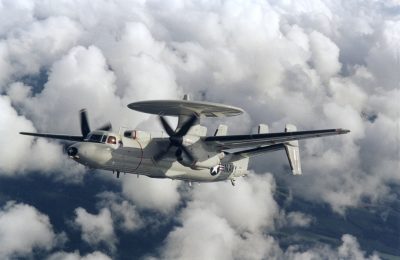
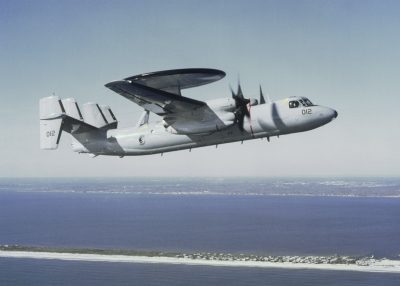
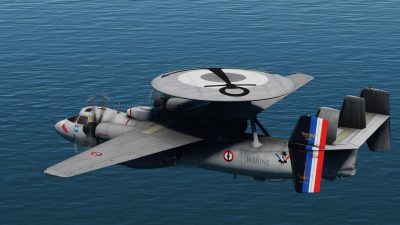
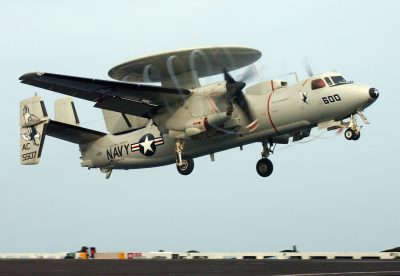
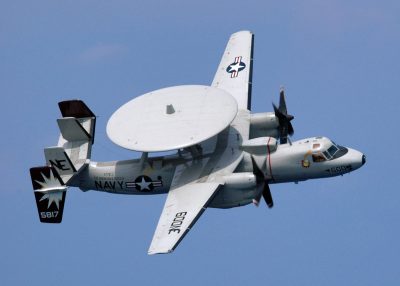
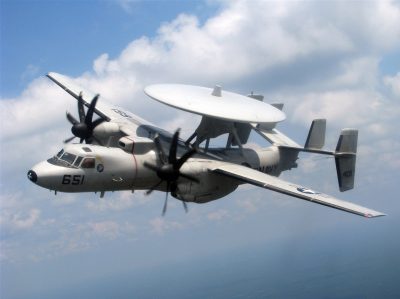
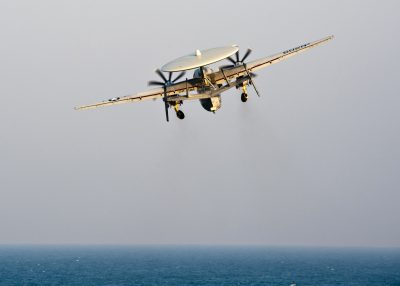
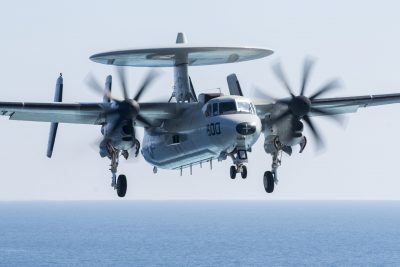
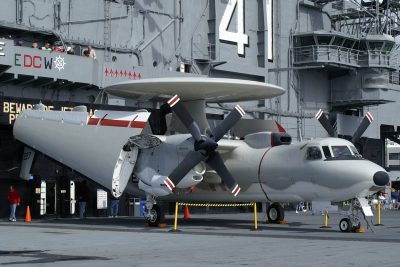
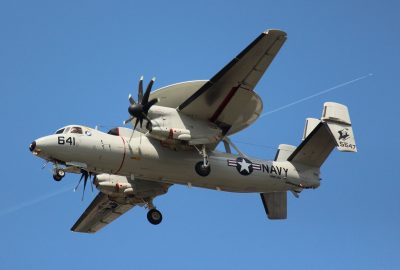
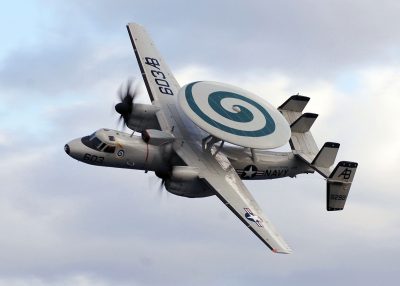
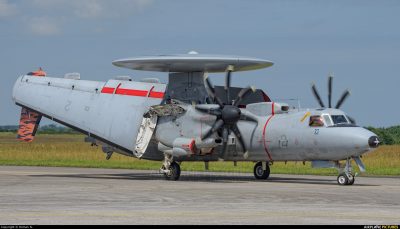
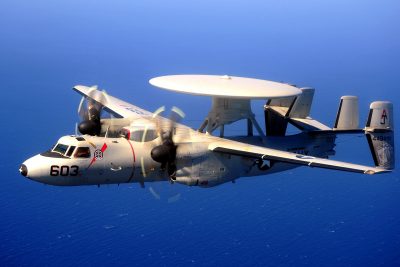
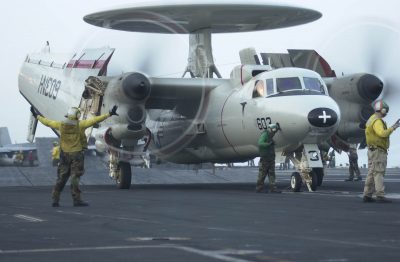
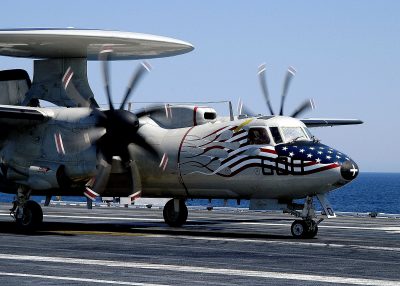
E-2C Hawkeye wallpapers for your PC, Android Device, Iphone or Tablet PC. If you want to download E-2C Hawkeye High Quality wallpapers for your desktop, please download this wallpapers above and click «set as desktop background». You can share this wallpaper in social networks, we will be very grateful to you.
At the beginning of 2007, Northrop Grumman demonstrated the first long-range radar observation (XRDF) E-2D E-2D radar observation aircraft at its plant in St. Augustine, Florida. His first flight took place on August 3 of the same year.
The E-2D is equipped with an AN / APY-9 radar with electronic scanning from Lockheed Martin, which provides enhanced search and combat capabilities as an onboard combat control system. The demonstrated experimental aircraft is the first of two that should be built during the development and demonstration system (SDD) worth $ 2 billion of the E-2D aircraft program (the contract with the US Navy to carry out work at the SDD stage was concluded in 2001). The Navy plans to manufacture 75 such aircraft over the next two decades.
In contrast to the previous options, the new Advance Hawk will be able to coordinate air strikes against air, ground and sea surface targets. According to T. Weiss, vice president of Northrop Grumman for RLDN programs and joint command and control in the management of hostilities, “the E-2D will allow the armed forces to take a large amount of data from various sources and synthesize this data for active reconnaissance.”
Aircraft E-2D “Advanst Hokai”, eventually, replace the carrier-based XRDN aircraft and control E-2C “Hokai”.
Along with the fact that the appearance of the new aircraft resembles the appearance of an E-2C aircraft, the systems and capabilities presented on the E-2D are completely reconstructed. The mushroom rotating radome of the aircraft radar, developed by L-3 Communications, has the ability to continuously scan with a 360 ° field of view, along with an electronically scanned antenna array. The system allows operators to focus radars on selected areas of interest.
The operators of the E-2D, according to Northrop Grumman, will also have new radar workstations, satellite communications capabilities and other means to provide the aircraft with increased awareness of the situation.
Another new feature is the modern cockpit with an increased glazing area and computerized graphic displays (indicators on a CRT, electronic display system), which replaces the indicators and onboard electronic equipment of the previous generation. One advantage is that pilots can also act as operators of weapon systems.
In November 2007, flight tests of the E-2D aircraft were completed in the USA. The car spent about 600 hours in the air. Half of them were devoted to testing the performance of radar systems. According to the company representative, the flight tests, the approximate date of which was determined about 5 years ago, were preceded by significant preparatory work. And during the tests, significant deficiencies in the aircraft systems were not found. The machine availability is currently 92 percent.
In the tests, which took place in the US state of Florida, also participated representatives of the US Navy, which, in particular, had to assess the potential effectiveness of the aircraft in the performance of combat missions. The decision of the military to start small-scale production of machines directly depends on how successfully this stage of testing the “flying radar” has been completed. The official report of the CPA on the results of this work is expected to be released at the end of December.
The tests of the experienced E-2D are scheduled for completion by 2011. Over the next decade, the US Navy intends to acquire 75 aircraft of this type to replace the E-2C Hawkeye produced in the 1970s and 1980s.
E-2D Modification
Wingspan, m 24.57
Length of the aircraft, m 17.54
The height of the aircraft, m 5.58
Wing area, m2 65.03
Weight, kg
empty aircraft 16890
maximum take-off 23,200
Domestic fuel kg 5624
Engine Type 2 TVD Allison T-56-A-427A
Power, kW 2 x 4000
Maximum speed, km / h 600
Cruising speed, km / h 575
Practical range, km 2583
Range of action, km 320 (on patrol from 3 to 4 hours)
Flight duration, h.min 6.20
Practical ceiling, m 9400
Crew, person 2 (3 DRLO operators)

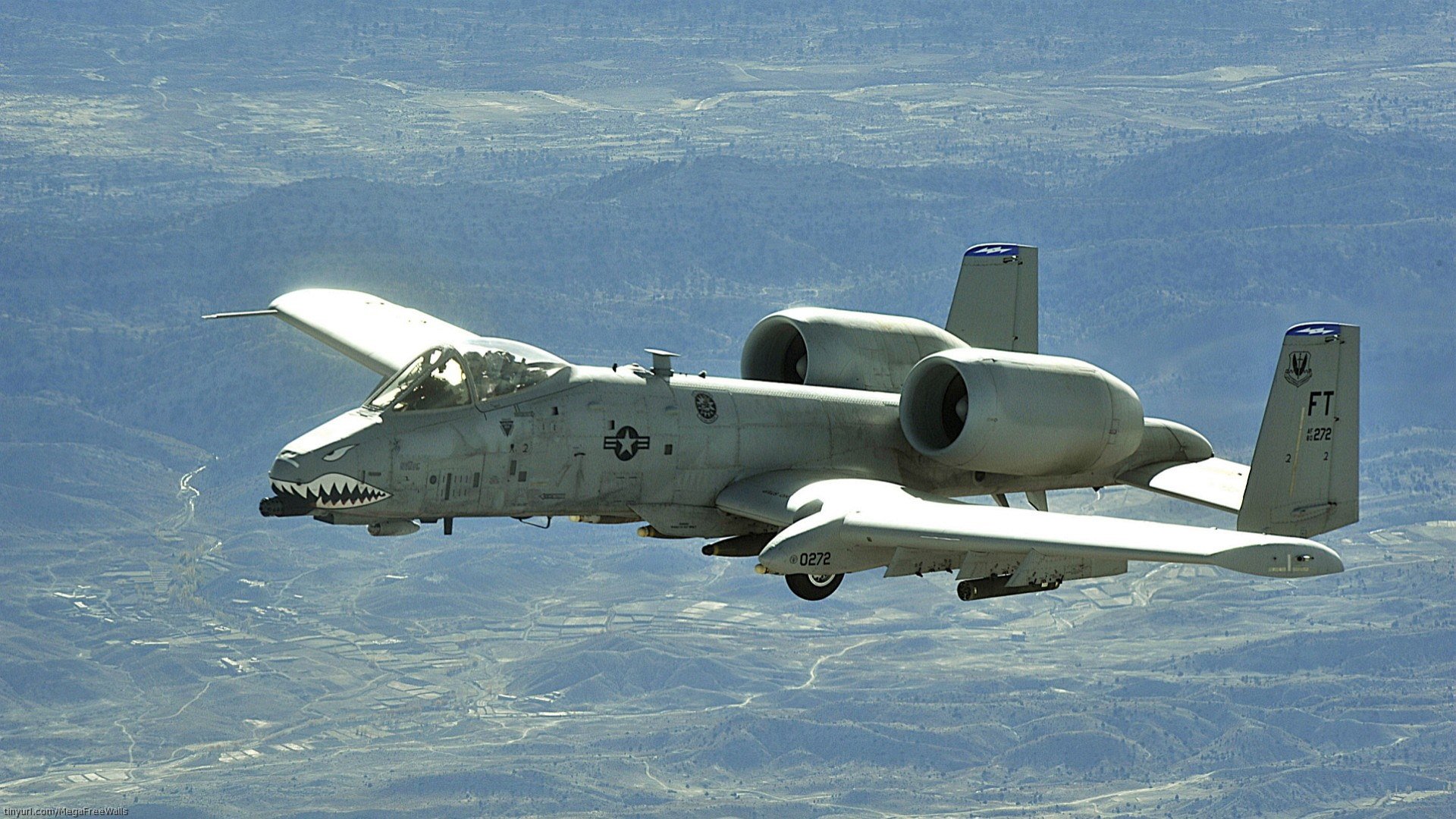

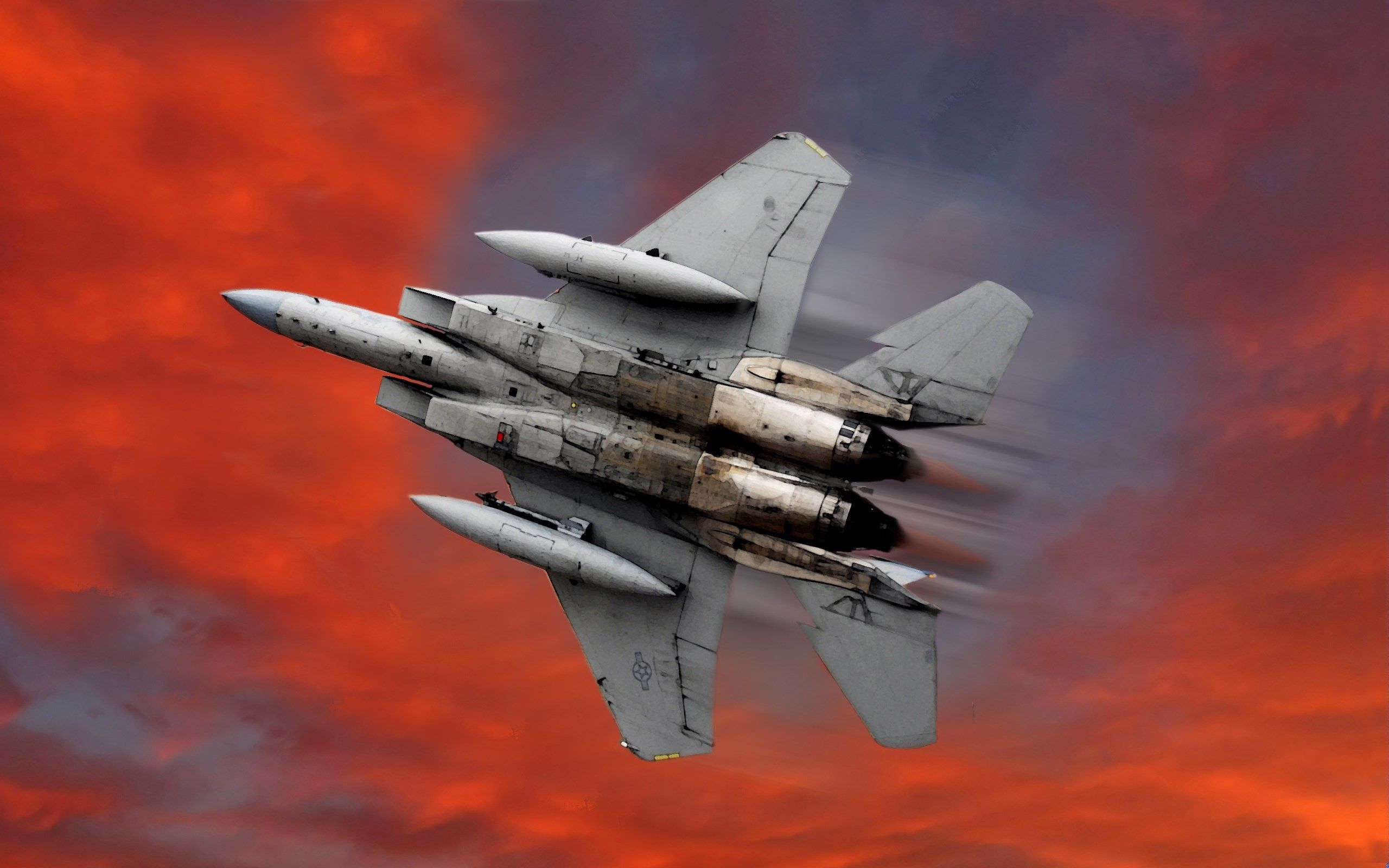
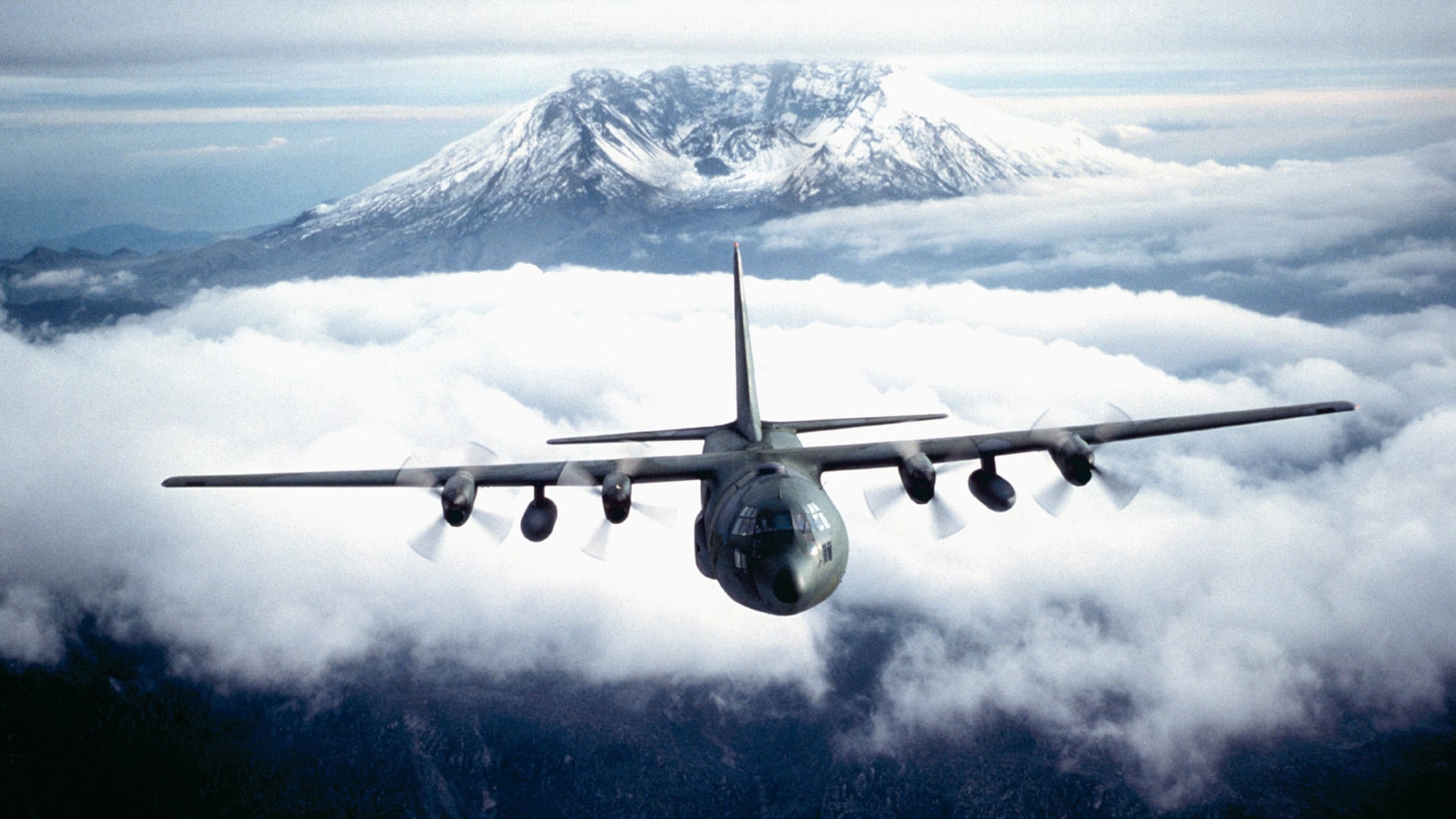


No Comment